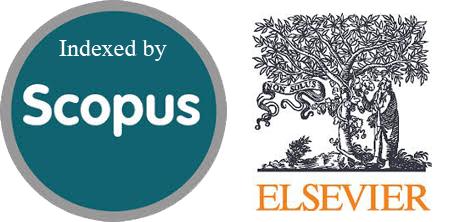Impact of Phototherapy on the Immunological and Protein Profile Markers in Iraqi Patients with Vitiligo: Application of Principal Component Analysis
DOI:
https://doi.org/10.54133/ajms.v9i1.2048Keywords:
Albumin, Globulin, Interleukin-6, Total protein, VitiligoAbstract
Background: Vitiligo is an autoimmune disease characterized by the loss of melanin pigment in the body, while interleukin-6 is a key indicator in activating the immune response associated with autoimmune diseases. Objective: The current study aims to understand vitiligo patients' immune and protein mechanisms using principal component analysis (PCA). Methods: The study involved 150 participants divided into three groups: patients treated with NB-UVB (PUV), newly diagnosed patients (PN), and healthy controls (C). Serum IL-6 concentrations were measured using ELISA, while total protein, albumin, and globulin were determined using colorimetric analysis. Principal component analysis (PCA) was used to identify statistically significant trends in the variables' distribution among various groups. Results: PCA analysis shows that biological variation among participants was primarily attributable to specific variables, most notably the albumin/globulin ratio and IL-6 concentration. A clear distinction was observed between healthy individuals and vitiligo patients, while the two disease groups (PUV and PN) showed similar biochemical and immunological characteristics, with some minor differences remaining. IL-6 and globulin levels significantly increased in both patient groups compared to the control group, although total protein, albumin, and A/G ratio levels significantly decreased. Conclusions: PCA analysis revealed IL-6 and albumin-to-globulin ratio as key factors influencing biological variation in vitiligo, highlighting immune responses and proteomic abnormalities as potential biomarkers for disease assessment and treatment.
Downloads
References
Marchioro HZ, Castro CCSd, Fava VM, Sakiyama PH, Dellatorre G, Miot HA. Update on the pathogenesis of vitiligo. Anais Brasileiros de Dermatol. 2022;97(4):478-490. dOI: 10.1016/j.abd.2021.09.008. DOI: https://doi.org/10.1016/j.abd.2021.09.008
Katz EL, Harris JE. Translational research in vitiligo. Front Immunol. 2021;12:624517. doi: 10.3389/fimmu.2021.624517. DOI: https://doi.org/10.3389/fimmu.2021.624517
Zainulabdeen JA, Al-kinani AA. New modified method for determination of nitric oxide synthase activity in plasma of vitiligo patients. Orient J Chem. 2018;34(5):2502. doi: 10.13005/ojc/340536. DOI: https://doi.org/10.13005/ojc/340536
Al-Tuama JA. Lack of association between PTPN22 1858 C> T gene polymorphism and susceptibility to generalized vitiligo in a Iraqi population. Iraqi J Biotechnol. 2022;21(1):89-101.
Tariq SF, Hussein TA. Study of the immunological status of Iraqi vitiligo patients. Baghdad Sci J. 2016;13(3):0454. doi: 10.21123/bsj.2016.13.3.0454. DOI: https://doi.org/10.21123/bsj.2016.13.3.0454
Said-Fernandez SL, Sanchez-Domínguez CN, Salinas-Santander MA, Martinez-Rodriguez HG, Kubelis-Lopez DE, Zapata-Salazar NA, et al. Novel immunological and genetic factors associated with vitiligo: A review. Exp Ther Med. 2021;21(4):312. doi: 10.3892/etm.2021.9743. DOI: https://doi.org/10.3892/etm.2021.9743
Khanna U, Khandpur S. What is new in narrow-band ultraviolet-B therapy for vitiligo? Indian Dermatol Online J. 2019;10(3):234-243. doi: 10.4103/idoj.IDOJ_310_18. DOI: https://doi.org/10.4103/idoj.IDOJ_310_18
Obeagu EI, Muhimbura E, Kagenderezo BP, Nakyeyune S, Obeagu GU. An insight of interleukin-6 and fibrinogen: in regulating the immune system. J Biomed Sci. 2022;11(10):83. doi: 10.36648/2254609X.11.10.83.
Rasheed RS, Salim S. Interleukin 6 Levels and their Correlation with Various Hematological and Biochemical Parameters in Covid-19 Patients. Al-Kindy College Medical Journal. 2023;19(1):75-80. doi: https://doi.org/10.47723/kcmj.v19i1.893. DOI: https://doi.org/10.47723/kcmj.v19i1.893
Singh M, Jadeja SD, Vaishnav J, Mansuri MS, Shah C, Mayatra JM, et al. Investigation of the role of interleukin 6 in vitiligo pathogenesis. Immunol Investig. 2022;51(1):120-137. doi: 10.1080/08820139.2020.1813756. DOI: https://doi.org/10.1080/08820139.2020.1813756
Li YL, Qi RQ, Yang Y, Wang HX, Jiang HH, Li ZX, et al. Screening and identification of differentially expressed serum proteins in patients with vitiligo using two‑dimensional gel electrophoresis coupled with mass spectrometry. Mol Med Rep. 2018;17(2):2651-2659. doi: 10.3892/mmr.2017.8159. DOI: https://doi.org/10.3892/mmr.2017.8159
Greenacre M, Groenen PJ, Hastie T, d’Enza AI, Markos A, Tuzhilina E. Principal component analysis. Nat Rev Methods Primers. 2022;2(1):100. doi: 10.1038/s43586-022-00184-w. DOI: https://doi.org/10.1038/s43586-022-00184-w
Farhan J, Al-Shobaili H, Zafar U, Al Salloom A, Meki AR, Rasheed Z. Interleukin-6: A possible inflammatory link between vitiligo and type 1 diabetes. Br J Biomed Sci. 2014;71(4):151-157. doi: 10.1080/09674845.2014.11669980. DOI: https://doi.org/10.1080/09674845.2014.11669980
Ghazizadeh M, Tosa M, Shimizu H, Hyakusoku H, Kawanami O. Functional implications of the IL-6 signaling pathway in keloid pathogenesis. J Investig Dermatol. 2007;127(1):98-105. doi: 10.1038/sj.jid.5700564. DOI: https://doi.org/10.1038/sj.jid.5700564
Speeckaert R, Belpaire A, Speeckaert M, van Geel N. The delicate relation between melanocytes and skin immunity: A game of hide and seek. Pigment Cell Melanoma Res. 2022;35(4):392-407. doi: 10.1111/pcmr.13037. DOI: https://doi.org/10.1111/pcmr.13037
Rosca A-M, Tutuianu R, Titorencu I. Advances in skin regeneration and reconstruction. Front Stem Cell Regen Med Res. 2020;9:143-187. doi: 10.2174/9781681087627120090006. DOI: https://doi.org/10.2174/9781681087627120090006
Yoshizumi M, Nakamura T, Kato M, Ishioka T, Kozawa K, Wakamatsu K, et al. Release of cytokines/chemokines and cell death in UVB‐irradiated human keratinocytes, HaCaT. Cell Biol Int. 2008;32(11):1405-1411. doi: 10.1016/j.cellbi.2008.08.011. DOI: https://doi.org/10.1016/j.cellbi.2008.08.011
Uttmani BM, Adya KA, Inamadar AC. Serum interleukin-6 and high sensitivity C-reactive protein levels and their correlation with the vitiligo disease activity and extent: A cross-sectional study of 58 patients. J Cutaneous Aesthetic Surg. 2023:10.4103. doi: 10.4103/JCAS.JCAS_12_23. DOI: https://doi.org/10.4103/JCAS.JCAS_12_23
Keller E, Beeser H, Peter H, Arnold A, Kotitschke R. Comparison of fresh frozen plasma with a standardized serum protein solution following therapeutic plasma exchange in patients with autoimmune disease: a prospective controlled clinical trial. Ther Apheresis. 2000;4(5):332-337. doi: 10.1046/j.1526-0968.2000.004005332.x. DOI: https://doi.org/10.1046/j.1526-0968.2000.004005332.x
Çobanoglu RK, Şentürk T. The role of albumin-to-globulin ratio in undifferentiated arthritis: Rheumatoid arthritis versus primary Sjögren syndrome. Arch Rheumatol. 2021;37(2):245. doi: 10.46497/ArchRheumatol.2022.8742. DOI: https://doi.org/10.46497/ArchRheumatol.2022.8742
Gabay C, Kushner I. Acute-phase proteins and other systemic responses to inflammation. New Engl J Med. 1999;340(6):448-454. doi: 10.1056/NEJM199904293401723. DOI: https://doi.org/10.1056/NEJM199902113400607
Ezzedine K, Tannous R, Pearson TF, Harris JE. Recent clinical and mechanistic insights into vitiligo offer new treatment options for cell-specific autoimmunity. J Clin Investig. 2025;135(2). doi: 10.1172/JCI185785. DOI: https://doi.org/10.1172/JCI185785
Karagün E, Baysak S. Levels of TNF-α, IL-6, IL-17, IL-37 cytokines in patients with active vitiligo. Aging Male. 2020;23(5):1487-1492. doi: 10.1080/13685538.2020.1806814. DOI: https://doi.org/10.1080/13685538.2020.1806814
Chang WL, Lee WR, Kuo YC, Huang YH. Vitiligo: an autoimmune skin disease and its immunomodulatory therapeutic intervention. Front Cell Develop Biol. 2021;9:797026. doi: 10.3389/fcell.2021.797026. DOI: https://doi.org/10.3389/fcell.2021.797026

Downloads
Published
How to Cite
Issue
Section
License
Copyright (c) 2025 Al-Rafidain Journal of Medical Sciences ( ISSN 2789-3219 )

This work is licensed under a Creative Commons Attribution-NonCommercial-ShareAlike 4.0 International License.
Published by Al-Rafidain University College. This is an open access journal issued under the CC BY-NC-SA 4.0 license (https://creativecommons.org/licenses/by-nc-sa/4.0/).











